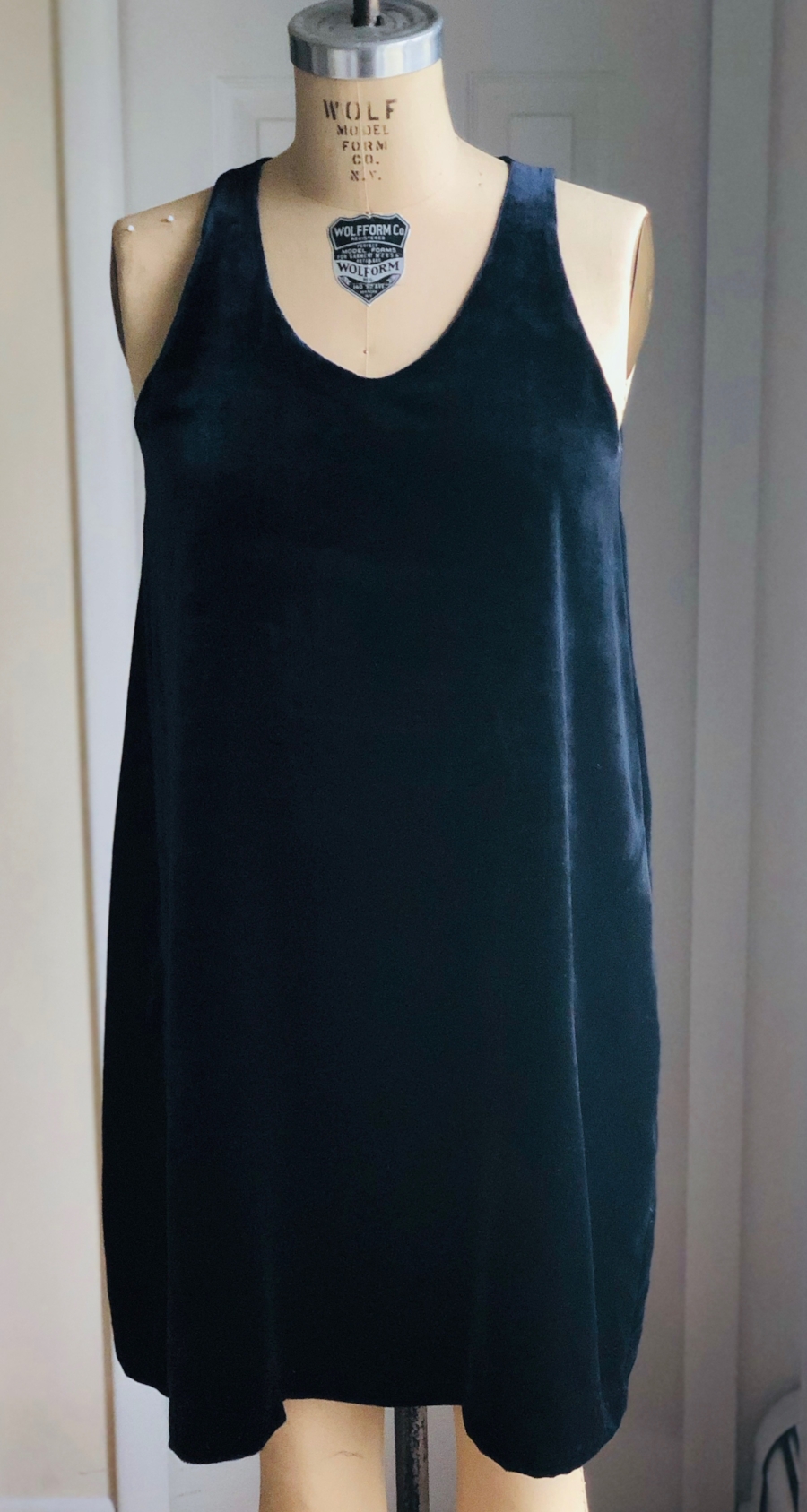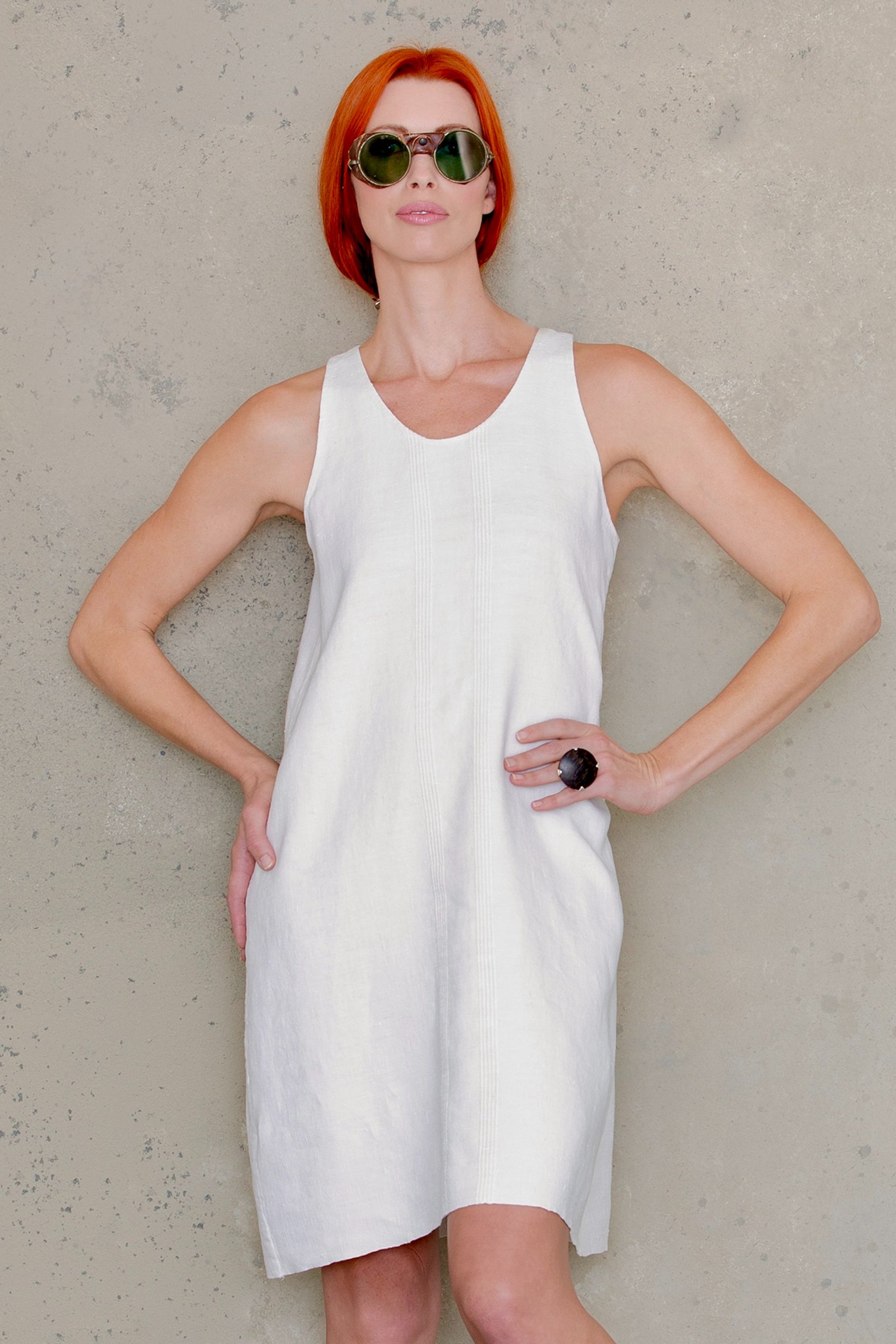Sewing Velvet: Sewing a Simple Dress Pattern for the Holidays and Beyond
The Slip Dress PDF sewing pattern and silk or rayon velvet is the perfect pairing for your next date night, holiday party or event. However, as dreamy as it looks, working with this fabric has some challenges. But it’s very doable, with little understanding of sewing with velvet, having a plan and armed with the right tools.
Pattern Selection:
For first-time velvet users, select a pattern that does not have many pattern pieces, darts, and other details. The Ann Normandy Design Slip Dress PDF sewing pattern is the perfect pattern to start with, as it is only two pattern pieces and minimal details.
Tools
• If never used silk velvet, order a bit more to practice, cutting and sewing
• Use Silk or rayon thread, I use Gutermann silk thread
• Use a fresh, sharp needle, I like Schmetz Microtex 70/10
• I found that a rotary cutter with a pinking blade worked well. It did not disrupt the fabric while cutting. A Sharp pair of shears will also work well. I use Olfa Deluxe Rotary Cutter 45mm with a pinking blade.
• Basting Adhesive Spray - I prefer Spray N Bond Quilt Basting Spray
Fabric Prep:
As with any other fabric, it is best to prewash this fabric, because it can shrink. Most textile manufacturers will recommend either dry cleaning or hand washing. I’m not a fan of dry cleaning and hand wash my silk velvet. Using cool water and detergent used for delicate fabrics. I never wring or squeeze the cloth, instead roll in a clean towel of the same color and then tumble air dry, no heat.
Laying out and cutting:
• Take a small piece of fabric and practice cutting
• Velvet is fabric with a nap with a pile that lays in one direction. There are two looks you can achieve depending on what direction you lay out the fabric. If the pile is going down, the material will appear shinier. If the pile is going up the color will look a deeper shade
• Make sure you lay out each pattern piece in the same direction of the pile/nap
• Putting woven fabric such as cotton on the cutting table to prevent the velvet from sliding is helpful. If you’re using a rotary cutter, velvet on cutting pads such as the Olfa cutting pad will not shift
• Spraying the edges of the pattern with basting adhesive spray will help the pattern to temporarily tack and keep the pattern in place while cutting. Note: the adhesive will not wear off and will continue to stick
Cutting the pattern:
Avoid putting pressure on the fabric while cutting to avoid shifting
Always cut in the direction of the pile for a cleaner cut
Sewing the dress:
Three ways to prepare the seam for stitching to prevent the fabric from shifting:
Use many, many pins
Hand baste stitches on both sides of the side seam to avoid shifting
Use basting adhesive spray to secure the side seam
Use scrap fabric to practice stitching the fabric together.
Setting up your machine:
Decrease the tension of the sewing machine
Use a stitch length of 2.0 – 3.0
Stitch slowly. Take your time, velvet is not a very forgiving fabric when you need to pull out a seam
Sewing within the direction of the pile will achieve a smoother seam
Keep side seams simple to prevent bulk. If you’re lining the dress, use pinking shears or a pinking blade with a rotary cutter. You can also use a Honk Kong finish with a lightweight fabric, such as organza if you are not lining the fabric.
The Ann Normandy Design Slip Dress has flat felled seams. It is recommended to not create a flat felled seam and just finish, as mentioned above. The neckline and armscye in the sewing pattern is a double roll, just do a single 3/8” turn instead, for a clean edge.
To line or not to line?
You can go either way. If you choose to have a bit more body, line the dress with a fabric similar to the drape of the velvet, such as lightweight silk charmeuse. Lining fabric in photo is silk twill purchased from Haberman Fabrics
Pressing:
Pressing velvet is tricky, It’s very easy to crush the nap. Here are a few suggestions to help press; always using a light hand and plenty of steam:
• Use a Needle (Velvet) Board, with nap side down. The needles will help keep the nap upright Dritz Needle Board
• Layout velvet on a towel with a pile underneath
Hemming:
Before hemming, let the dress hang for 24 hours and trim the bottom, if necessary. I slip stitch by hand to hem the dress to create a smoother finish. Lightly press with plenty of steam and a needle board, or a layer of velvet or a towel underneath the fabric.
Choosing an easy pattern is a wonderful way of learning a more challenging fabric sewing technique. You trade pattern complexity for fabric complexity and it’s a great way to level up your sewing skills. Taking on a challenging pattern AND fabric (such as a velvet jacket or blazer) can be a recipe for a UFO project that never gets sewn. But the Slip Dress is one easy-gratification pattern that helps you learn something new that you can take to your next sewing project
Happy Sewing!
Kim
Slip Dress PDF Sewing Pattern
Sale Price:$8.46 Original Price:$9.95







